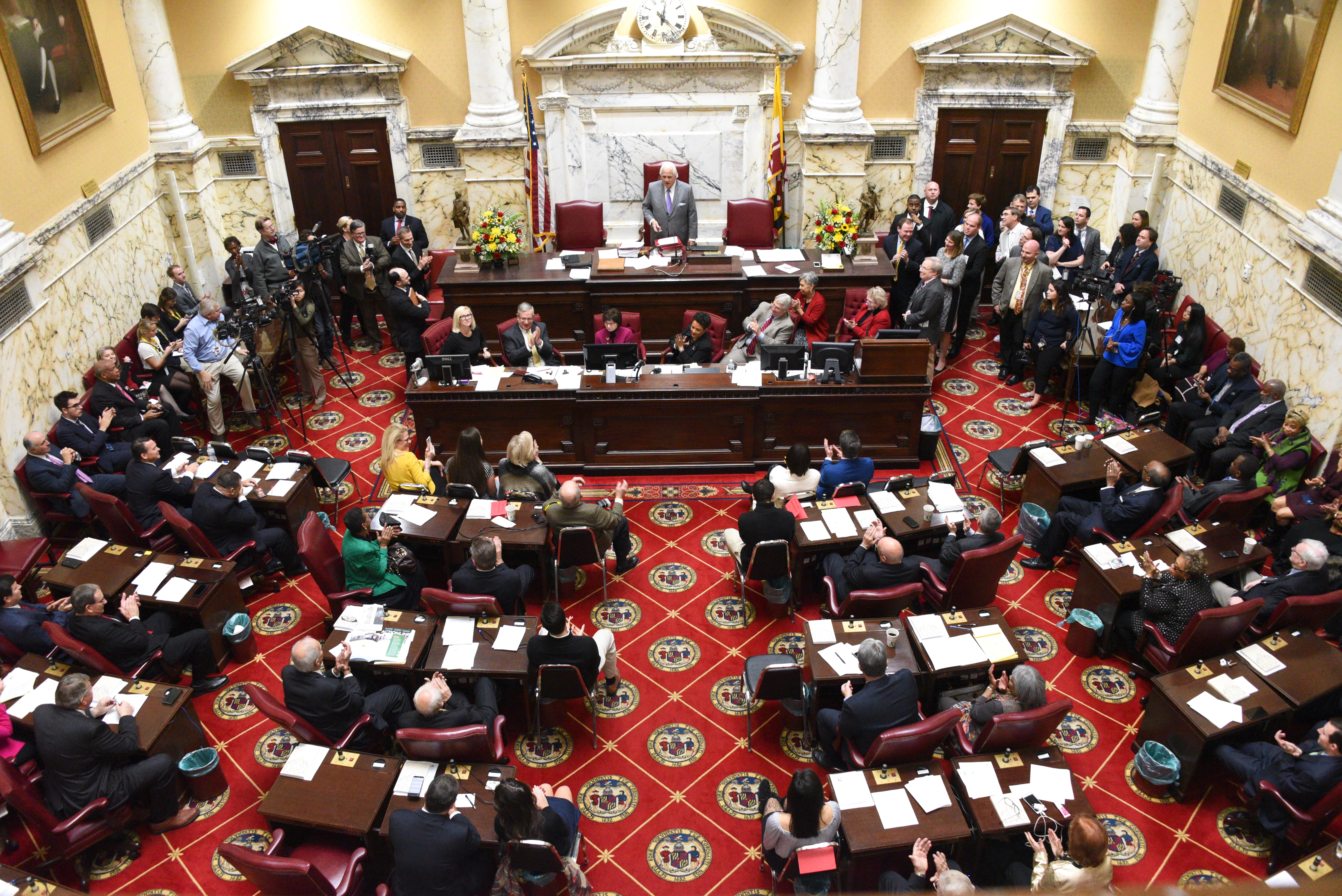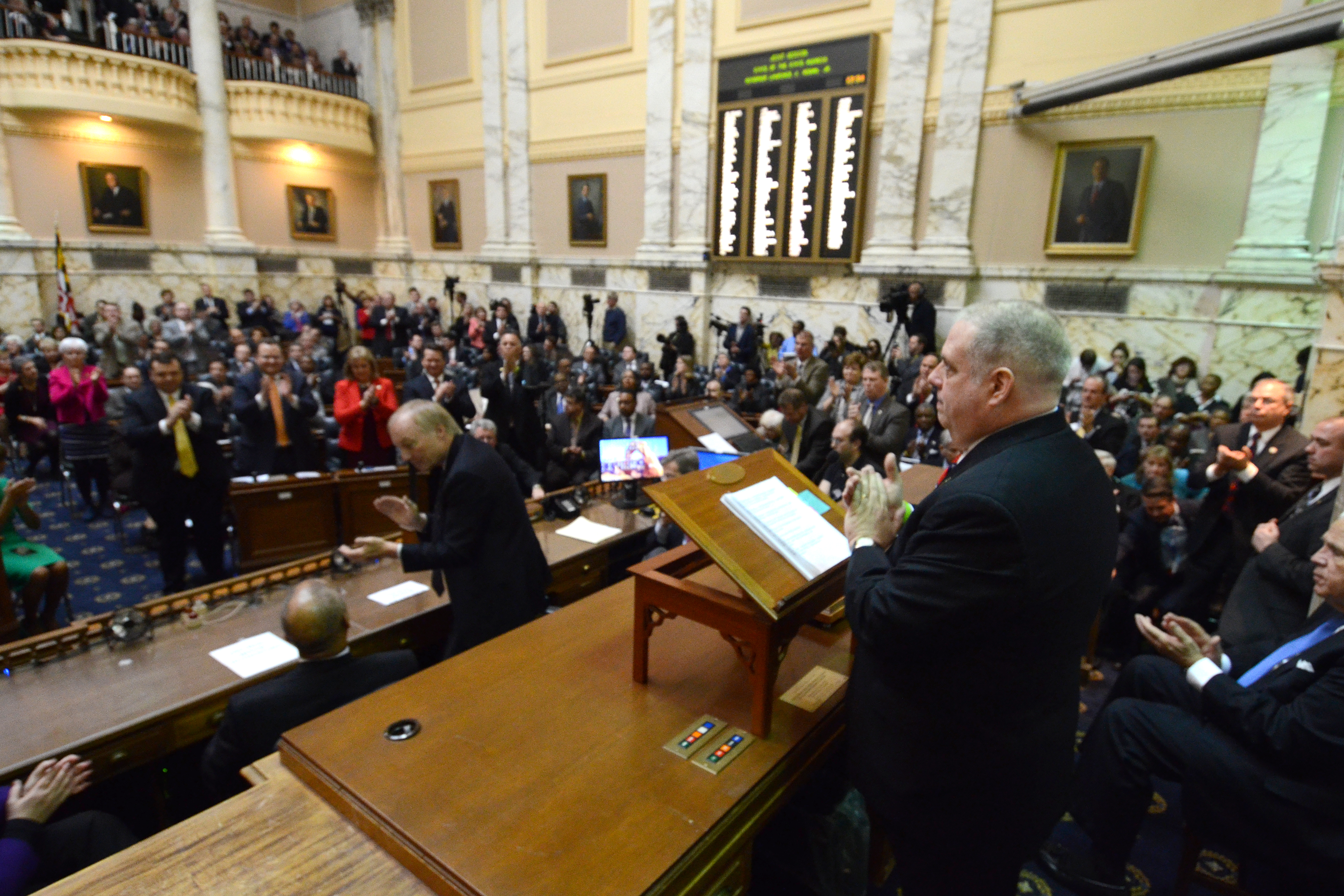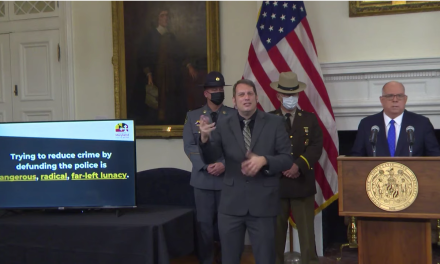By Len Lazarick
Len@MarylandReporter.com
Public employee unions, nonprofit groups and education advocates have been huddling in recent weeks to organize support for what they call “a balanced approach” to the continuing fiscal mess facing Maryland.
“Balanced approach” means balancing next year’s budget with its continuing billion-dollar shortfall not just with spending cuts but with more revenues: tax hikes. These include tax increases on millionaires, corporations, internet sales and a long list of consumer services, not to mention cigars and gasoline – a pretty inflammatory mix in all.
Tonight, as the Spending Affordability Committee meets in Annapolis, we’ll get to see if legislative leaders are inclined toward a “balanced approach.”
Monday night, AFSCME — the American Federation of State, County and Municipal Employees, the largest union of state workers – and MSEA — the Maryland State Education Association, representing more than 70,000 teachers – along with a dozen other sponsors organized a “community conversation” on the impact of state budget cuts. They brought out more than 100 people to Baltimore City Community College.
Worst fiscal crisis since the Depression
“States are facing the worst financial crisis since the Depression,” said Jon Shure of the Center for Budget & Tax Policy in Washington and a Bethesda resident. The states are experience “the biggest drop in revenues that they ever seen,” he said.
“There are some people who want to take advantage of this crisis to shrink government,” Shure said. But like someone who has lost his job and can’t pay his mortgage, “you don’t have a spending problem, you have an income problem.” (This flips the mantra of Republican legislators, who like to say, “We don’t have a revenue problem, we have a spending problem.)
Shure argues that “cutting makes it harder to build a strong economy,” and state governments can quickly put revenues back into the economy.
Neil Bergsman of the Maryland Budget and Tax Policy Institute – an affiliate of the Maryland Nonprofits Association — said “we need government to step up and provide some demand.” The state has already “cut services” – scaled back increased spending – and reduced government jobs.
Workers testify about impact of cuts
Attesting to the budget cuts, a long string of government workers testified to the way tight funds have changed their jobs.
Archie Nelson, a resident adviser for the Department of Juvenile Services and union shop steward, said “we’ve become guards” through budget cuts, keeping the detained youths from assaulting each other, rather than helping them see a positive way out of their situation.
Karen DeCamp, director of neighborhood programs for the Greater Homewood Community Corp., talked about the impact on education.
“We’re flat funding education,” DeCamp said, and “that flat funding meant real cuts. Flat funding is a de facto cut.” She wanted the inflation adjustment restored to the Thornton education funding formula.
It was the same argument that was made two weeks ago by none other than Alvin Thornton himself, the Howard University educator who chaired the commission that led to a massive infusion of funding into K-12 education since 2002. Thornton was speaking to the Maryland Education Coalition at a meeting in Columbia.
As far as he is concerned, “Thornton” aid has not been fully funded.
Business groups on a different wave length
While teachers and social service workers agree among themselves about the need for more revenues, they might as well be speaking in foreign languages to chambers of commerce and other business groups, who see some of their members struggling to hold on through the recession.
Sen. James Ed DeGrange, the Anne Arundel Democrat who is the Senate chair of the Spending Affordability Committee this year, told the BWI Business Partnership Wednesday morning that jobs putting people back to work in the private sector and transportation funding – along with balancing the budget — would be the focus of the upcoming session.
DeGrange, who rarely votes for a tax increase, seems inclined to raise transportation revenues, but found little support for a gas tax hike. He asked how many people “wouldn’t mind” a gas tax increase. Out of about 150 business people at the breakfast, he counted four who raised their hands.
“That’s better than my last meeting,” DeGrange observed, noting that “the business community is kind of divided” on tax hikes for transportation.
He said nothing that would have encouraged education advocates.
Flat funding for education
“It’s always been that we haven’t touched education,” particularly for K-12, DeGrange said, who also chairs two budget subcommittees. But next year, in education aid, “maybe we hold some things flat. That’s the only thing that hasn’t been touched.” (Public school aid was largely held flat this past year.)
“Everything has to be on the table,” DeGrange.
“There will be proposals” for other tax increases, but transportation funding is “where the focus is going to be,” DeGrange said in an interview.
Gov. Martin O’Malley has shown some support for a gasoline tax hike – as have top legislative leaders — and last week O’Malley argued that a millionaires income tax surcharge doesn’t drive the wealthy from Maryland.
This evening’s meeting on Spending Affordability Committee might provide some clues as to whether legislative leaders foresee a steady diet of cuts or the “balanced approach” with tax hikes other groups are advocating.







“Spending Affordability Committee” . . . think about that, my friends . . . if you have to have a committee to figure out if you can AFFORD to SPEND, you’re in deep trouble . . . ’nuff said.
A failure to increase spending is not a cut in spending. We can see why our children finish high school with no economic common sense as these educators show none of their own. Increasing the costs of doing business passes those costs on to the consumer who eventually withholds spending, and as a result businesses close down or move to other states where it is cheaper to do business. Either way parents putting their kids through school lose jobs. A classic public sector vs private sector war. Your solution – both sides lose. However, if you balance the budget, reduce taxes, reduce costs of doing business, do not discourage consumers who buy products, and reduce the size of the public sector then when more parents and stakeholders have private sector jobs, there is more tax inflow from their payroll taxes to pay more into public coffers. Why is this hard to understand?
“cutting makes it harder to build a strong economy,” and state governments can quickly put revenues back into the economy.” The Government takes our (private sector/citizen) money’s and runs it through its bureaucracies … paying public sector employees and attendant administrative costs in the process. What’s left is distributed to selected (favored?) sources. Much of these moneys, left in the private sector, can better be used to directly and more generally to nourish the private economy, the source of the “revenue” being confiscated to support “Government” activities.
“the impact on education.” “We’re flat funding education,” DeCamp said, and “that flat funding meant real cuts. Flat funding is a de facto cut.”
Could it be there is a need to reorder and prune “education” spending? Should educational organizations and salaries reflect realities of today’s economy? Should priority be given to class work that will facilitate functional employees on graduation? While stimulation of intellectual capacities is “nice to encourage,” real world functional skills are vitally needed. One of the points the “OWS” experience highlighted was there are too many ending their “educations” absent knowledge and skills commensurate with job performance and getting hired.
This is not to mention the litany of mismanagement and debatable expenditures the State has recently been disclosed as engaging in.
I would favor holding the so called “Balanced Approach” on hold, unless and until, there is a track record of frugal and responsible spending!
A “balanced approach” can only have one meaning for people who understand the concept of the U.S. Constitution and the American way of life. A “Balanced Approach” means that you look at your previous one (two or three even) year’s revenues, select the lowest year’s revenue, The allocate all of your spending to fit within that revenue stream. Anything that falls outside that stream must be paid for by reducing NON-ESSENTIAL activities and services such as travel expenses take-home cars, assigned guards, and salaries that exceed the salary levels of non-government workers. Require that any pension payments be suspended for all legislators, and that their salary be reduced to One dollar a week until they have balanced the budget.